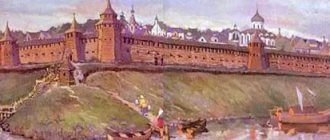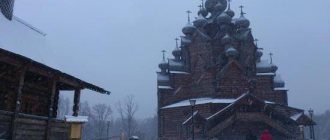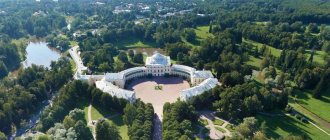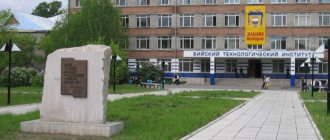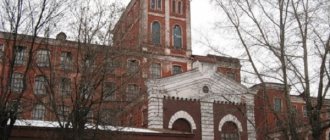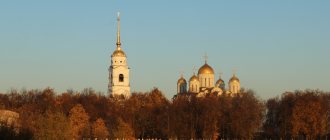With ancient Vyazma, Dorogi-ne-dorogi.ru opens a series of publications about small towns in Russia. The city with centuries-old linden trees is located in the Smolensk region. There are no ugly offices made of glass and concrete, but 14 churches of the 17th century and the quiet banks of the Vyazma River have been preserved. A holiday for those who want to plunge into the silence of the Russian outback, which has not yet been affected by the tourist fever. We'll tell you what's worth seeing in Vyazma and why you should go there.
Vyazma is the same age as Moscow. Like the capital, it was often destroyed, but the city center was preserved in its state at the beginning of the last century. During the Great Patriotic War, many buildings were destroyed. Before the war, there were 35 churches in the city, but only 14 remain. But the atmosphere of a bright, provincial Russian city has been preserved - openwork churches, two-story houses, old trees.
What to see in Vyazma
The main attractions of Vyazma are the churches. Almost all the churches in the city are open, you can go in and look at the ancient icons.
John the Baptist Monastery and Hodegetria Church
The most beautiful temple in Vyazma is the Church of the Smolensk Icon of the Mother of God “Hodegetria” (XVII century). It is located on the territory of the St. John the Baptist Monastery (XV century). The temple is snow-white, openwork, with graceful domes. And on the territory of the monastery you can feel that this is a monastery, and not a tourist attraction with endless souvenir shops. There are well-tended flower beds and a vegetable garden in the backyards.
Museum of Local Lore
We all went to similar museums as schoolchildren. Nearby are mammoth tusks, unknown how they were abandoned in Vyazma, and elegant dishes from the century before last. There are halls dedicated to peasant life, and a large exhibition about the war (the city was under occupation for two years).
If you book a tour in advance by phone, you can find out how great the history of Vyazma is.
The city is ancient; over the centuries it was captured by Lithuanians, Poles, French, and Germans. In the winter of 1654-1655, Vyazma became the residence of the Russian tsars. Alexey Mikhailovich temporarily moved here. Then Moscow architects built the Kremlin in the city. The Kremlin's Spasskaya Tower has still been preserved (you can quickly walk to it from the museum).
In Vyazma you don't need a car . The main objects, except for distant monasteries, are located close to each other.
Come to Sovetskaya Square with the Lenin sculpture in front of the Palace of Culture building. Opposite it, on the other side of the square, find a monument to Lapt and the Pernovsky Regiment . This is a grenadier regiment that liberated Vyazma from the Napoleonic army. There were other regiments, but this one was the first to enter the city.
Other monuments of Vyazma:
- General Efremov - not wanting to surrender, he shot himself in the Vyazma “cauldron” in 1942. Even the Germans recognized the general’s courage and buried him with military honors. After the war, he was reburied in Vyazma, a hero of the Russian Federation posthumously.
- Actor Anatoly Papanov
- To participants in the battles of 1812 - installed on the 100th anniversary of the battle of Vyazma.
- Karl Marx
Khmelita - Griboedov's estate
Interiors of the Khmelita estate
Imagine the wilderness of the forest, the Smolensk region in its pre-revolutionary form. There are no factories, no shops, but only villages, forests, rivers and fields. And in the middle of this stands an old blue and white manor. The manor house was built in the 17th century in the Elizabethan Baroque style, rare for provincial architecture. This is the Griboyedov estate. You should definitely book a tour of the halls of the estate. It is well preserved - mahogany furniture, tile stoves, silk wallpaper, antique books.
From Vyazma to Khmelite the drive is about 30 km, the road is good. But the estate closes early (earlier in winter than in summer), keep an eye on the schedule.
Church of the Smolensk Icon of the Mother of God, called “Hodegetria”
The church in these places appeared in the 17th century and is popular among believers throughout the region. The attraction is included in the UNESCO World Heritage List.
This is a unique example of Russian architecture, a creation created at the turn of change, when the tent style was becoming a thing of the past. Only three such churches have survived in the country: in Vyazma, Putinki and Uglich.
The temple is located on Dokuchaev Street, 48A.
Svetlana Savitskaya's plane
Between Repin Street and 25th October Street, on the territory of a small city square, a monument to Svetlana Savitskaya was erected. This is a real MiG-17 model aircraft. It was on this aircraft that Svetlana began her training.
The design of the monument is presented in such a way that it seems that an airplane is taking off. Savitskaya is an honorary citizen of the city and twice a hero of the Soviet Union.
Giant umbrella over a bus stop
What to visit : The most original sculpture of the city is located. The bus stop, made in the form of a brick semicircle with a round window, is covered by a huge umbrella.
Where: Sovetskaya Square.
Why it’s interesting: The monument appeared on March 8, 2014, in honor of Women’s Day, as a gift from the city administration.
Excursion routes
The most popular excursion route is a visit to the Khmelita Museum-Reserve and a sightseeing tour of the city of Vyazma. The sights that can be seen by choosing this route are, first of all, the Griboyedov estate, located 37 kilometers from the city, as well as the most beautiful churches of Vyazma - the Trinity Cathedral and the Cathedral of the Mother of God Hodegetria.
In addition, guests visit the local history museum, get acquainted with the history of the city, and can see the city’s most beautiful churches and monuments related to the events of the Great Patriotic War.
Monument to Russian bast shoes
In memory of the Old Smolensk Road, which has now lost its centuries-old significance, an interesting monument to Russian bast shoes appeared in the city. It should symbolize how important this road was for Russia, how many bast shoes and boots were knocked down here on the way to Europe and back.
Church of the Nativity of the Virgin Mary
This is a brick structure erected from 1782 to 1785. The bell tower of the church is free-standing, and the temple itself was built in the Baroque style. The church is also known for the fact that in 1812 liberation battles from Napoleonic troops were fought near its walls.
The church is located at Sovetskaya Square, 3 and since 1970, after restoration work, it has housed a local history museum.
Holy Trinity Cathedral
This is the main cathedral of the city, built in 1676. Located on the left bank of the river, on the territory of the fortress. The first mention of the St. Nicholas Church (old name) is in the chronicles of 1015. In 1635 it was renamed Holy Trinity Cathedral. In 1812, the building was completely burned. Later, the temple was restored with funds allocated by the merchant Sabelnikov in 1847.
Today it is a two-altar cathedral, made in the classical style typical of Moscow churches at the turn of the 16th century. The decorative elements of the building are made in pseudo-Russian style.
The temple is located on Nagornaya street, 1.
Interesting Facts
Vyazma, whose attractions are varied and numerous, is also interesting because it is the birthplace of many famous figures. Among them is Alekseev Mikhail Vasilievich, a Russian military leader, participant in the Russian-Turkish, Russian-Japanese and First World Wars.
Vyazma is the birthplace of Anatoly Dmitrievich Papanov, a Soviet and Russian theater and film figure. Pavel Stepanovich Nakhimov, a Russian admiral, was born in Vyazemsky district. In 2009, the city was awarded the honorary title City of Military Glory. In the Vyazemsky district, on the Rykhlovo estate, the granddaughter of Alexander Sergeevich Pushkin, Vera Aleksandrovna Mezentsova, is buried.
An unusual place in the Vyazemsky district is Semlevskoye Lake in the village of Semlevo. According to legend, Napoleon hid his treasures in it when he left Moscow.
The city of Vyazma and its attractions will be of interest to lovers of the history of the Patriotic War of 1812 and the Great Patriotic War, iconic modern and ancient architecture. In Vyazma, city buildings from the 18th – 19th centuries have also been preserved. Also of exceptional interest are the surrounding areas of the city, where there are estates and parks from the 18th century.
Article design: Vladimir the Great
Spasskaya Tower
This tower was built in the 17th century and was part of the city fortress, one of its six towers. The fortress was also heavily damaged by the French in 1812; only the three-tiered Spasskaya Tower survived. It is noteworthy that the thickness of the tower walls is six meters, and its height is 28 meters. After the war of 1812, a warehouse for the Arkadyevsky Monastery was located here.
Spaso-Preobrazhenskaya
The church was built in the first half of the 18th century on the site of a men's monastery destroyed by Lithuanian troops. The church was built at the expense of the local nobility and merchants. After the revolution, the new authorities transferred the church building to public organizations, which remained there until the end of the last century.
Soviet square
The main city square, around which the main architectural monuments of the city are located, faces the Vyazma River, to which there is a wide descent. Initially, the square was called Torgovaya and used to host large and noisy fairs; now the main citywide events, parades, city day and others are held here.
Top 5 places suitable for holidays with children
Vyazma, whose sights will captivate mainly adults, is also a place for interesting and comfortable pastime with children:
- In the city center, next to Efremov Square, there is a Central Park with attractions, playgrounds and cafes.
- Here, on Efremov Square, you can stroll by the general’s monument and see the Eternal Flame.
- At Sovetskaya Square 2a there is a theater for young spectators.
- For older children, it will also be interesting to visit the Museum of History and Local Lore at Sovetskaya Square, 3.
- The Bastion entertainment sports club is located at Zavodskaya Street, 29.
Museum of History and Local Lore
As is usually the case here in Rus', local history museums are located in the buildings of former temples or churches. The shelter for this museum was the boundary of the 17th-century Virgin Mary Church, which now houses more than 16 thousand unique exhibits. There is also an art salon of local painters.
John the Baptist Monastery
This monastery is considered one of the largest in the Smolensk region, organized with the highest permission of Ivan the Terrible himself in the 16th century. The wars that did not pass by caused great damage to the buildings of the complex, which had to be restored for a long time. The last restoration ended in 1976. After which male monks settled in the monastery, and five years later it became a purely female monastery.
Church of the Vladimir Icon of the Mother of God
This church appeared in the city between 1770 and 1776. This is a four-tiered structure with five chapters. The largest repair work was carried out in 1851 and 1891. Later, repairs were carried out several times, in 1978 and 1982, but due to lack of funds, the work was never completed. The temple came into the possession of the diocese, but services are never held there.
